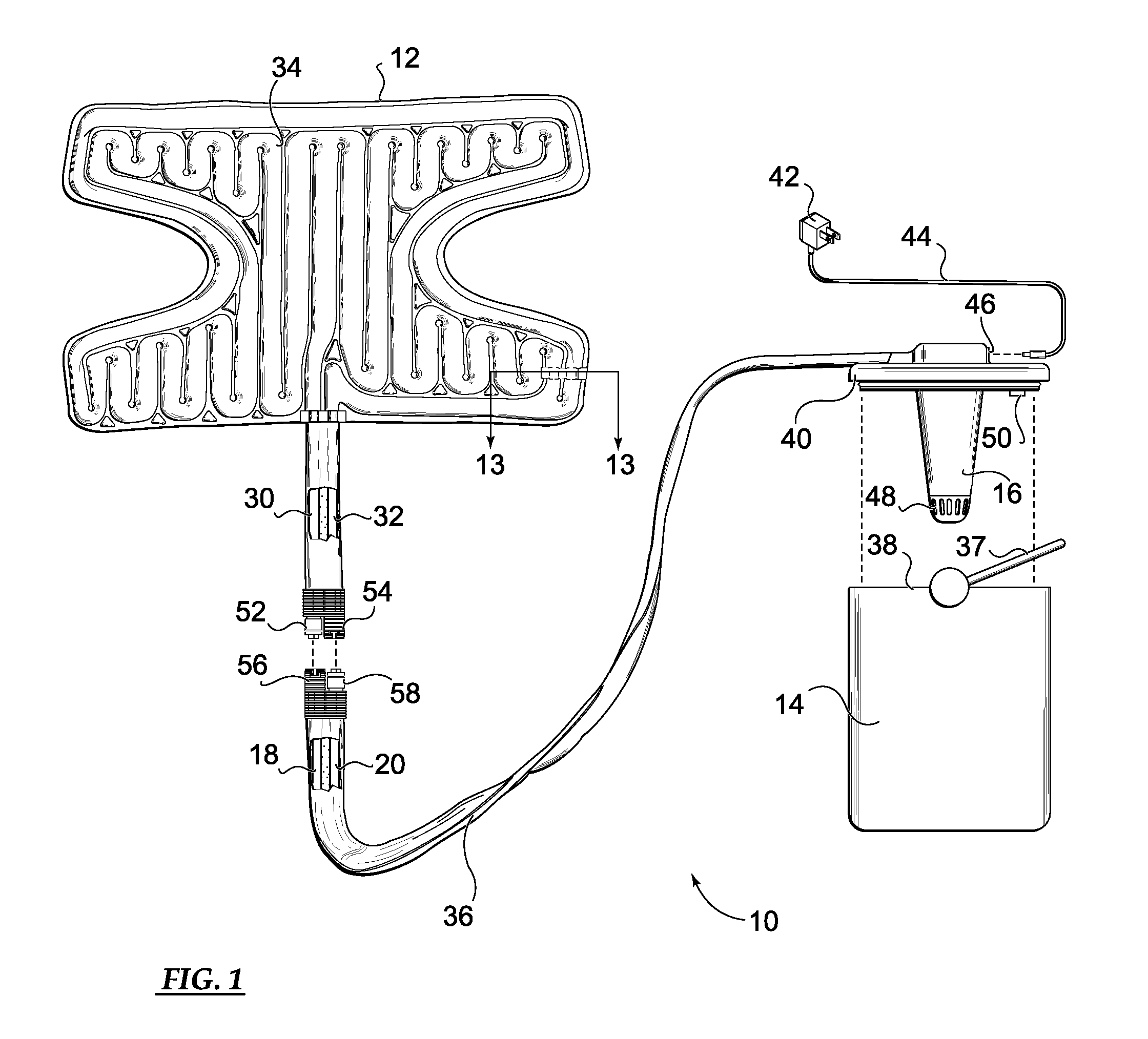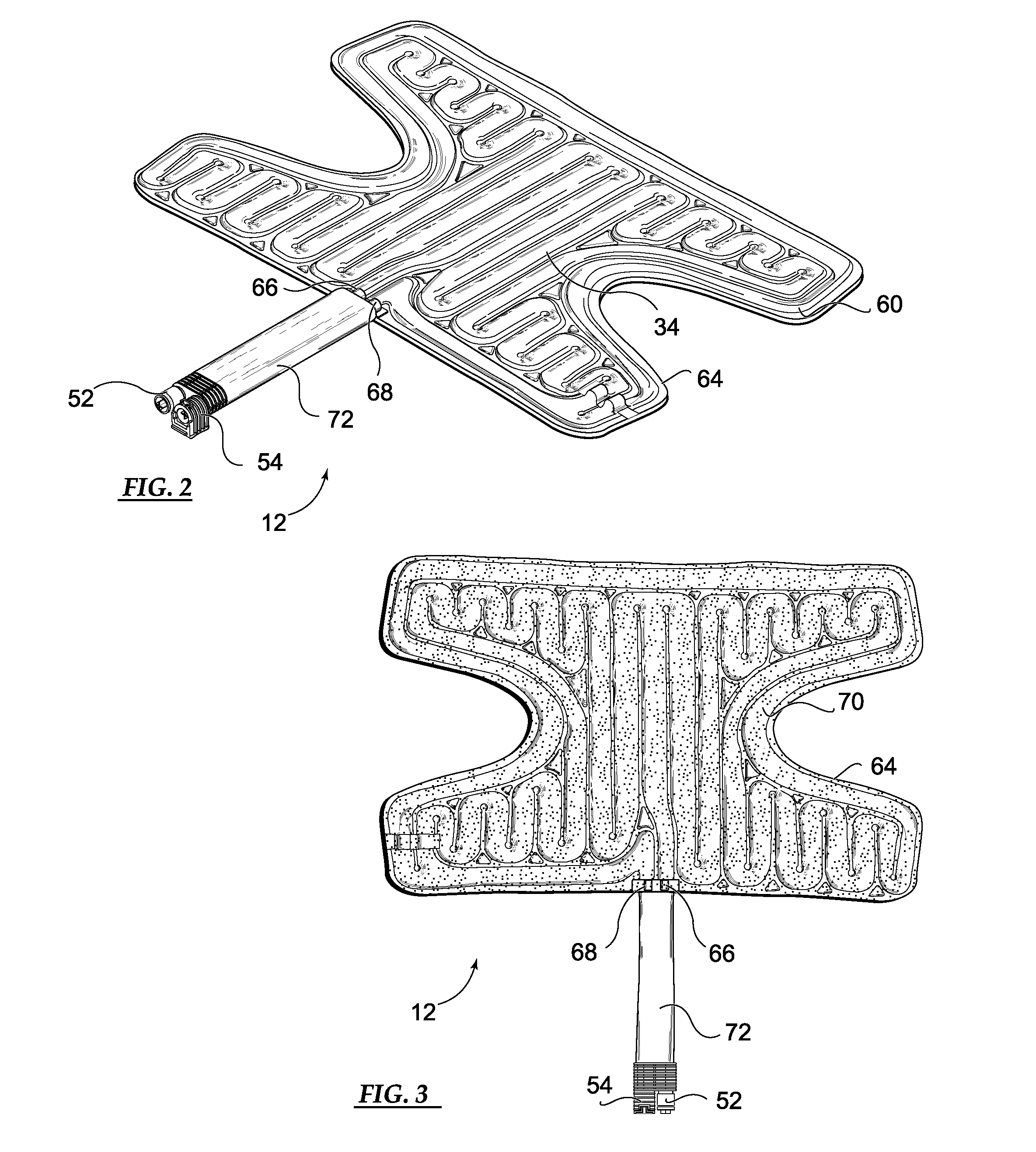Heat Transfer Pad Having Localized Treatment Zones
a heat transfer pad and treatment zone technology, applied in the field of therapeutic treatment, can solve the problems of periodic treatment temperature fluctuations, high manufacturing and maintenance costs, and material warming at low temperatur
- Summary
- Abstract
- Description
- Claims
- Application Information
AI Technical Summary
Benefits of technology
Problems solved by technology
Method used
Image
Examples
Embodiment Construction
[0033]FIG. 1 shows an exemplary non-ambient temperature therapy system generally designated 10 in which a heat transfer pad of the present invention has utility. The system 10 comprises the heat transfer pad 12, through which a heat transfer fluid is circulated, and a reservoir 14, which is a source of fresh heat transfer fluid. The system further comprises a pump 16, a fresh fluid feed line 18 and a spent fluid return line 20 (shown in a partial cutaway) which enable continuous steady-state circulation of the heat transfer fluid from the reservoir 14, through the pad 12 and back to the reservoir 14 in a manner described in detail below.
[0034]The intended use of the system 10 is for administering non-ambient temperature therapy to a patient on whom the heat transfer pad 12 is mounted. Although the patient may use the system 10 to self-administer the therapy during individual sessions, the overall non-ambient temperature therapy program is typically under the direction of a health ca...
PUM
 Login to View More
Login to View More Abstract
Description
Claims
Application Information
 Login to View More
Login to View More - R&D
- Intellectual Property
- Life Sciences
- Materials
- Tech Scout
- Unparalleled Data Quality
- Higher Quality Content
- 60% Fewer Hallucinations
Browse by: Latest US Patents, China's latest patents, Technical Efficacy Thesaurus, Application Domain, Technology Topic, Popular Technical Reports.
© 2025 PatSnap. All rights reserved.Legal|Privacy policy|Modern Slavery Act Transparency Statement|Sitemap|About US| Contact US: help@patsnap.com



